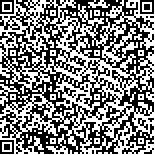|
|
| |
|
|
| 本文已被:浏览 1606次 下载 1285次 |

码上扫一扫! |
|
|
| 吉富罗非鱼成鱼脏器系数的研究 |
|
徐娟娟1,2, 王卓群3,2, 舒秀君3,2, 程波2, 任源远2, 张欣4, 王赛赛4, 韩刚2, 穆迎春2, 宋怿2
|
|
1.上海海洋大学食品学院 上海 201306;2.中国水产科学研究院质量与标准研究中心 农业农村部水产品质量安全控制重点实验室 北京 100141;3.上海海洋大学水产与生命学院 上海 201306;4.北京市水产科学研究所 北京 100068
|
|
| 摘要: |
| 为研究罗非鱼(Oreochromis niloticus)组织脏器重量与体重的关系,获得脏器系数。本研究随机选取40尾体重为600~900 g雄性吉富罗非鱼(GIFT)成鱼,进行体重、心脏、肝脏、肾脏、脾脏、肠、鳃、皮肤、胆囊、鳞片、肌肉及其他组织(鱼头、鱼鳍和鱼骨等)重量的测定,对体重与各组织脏器重量进行相关性分析,建立最优回归模型,并采用体重约为500 g雄性吉富罗非鱼对各组织脏器重量进行模型外推验证。结果显示,雄性吉富罗非鱼成鱼心脏、肝脏、肾脏、脾脏、肠、鳃、皮肤、胆囊、鳞片、肌肉和其他组织(鱼头、鱼鳍和鱼骨等)的脏器系数(%)分别为0.12±0.02、1.22±0.20、0.11±0.03、0.13±0.05、1.58±0.30、2.85±0.17、3.31±0.38、1.05±0.24、2.89±0.41、51.60±2.09和29.66±2.00,所有测定11个组织脏器重量与体重均呈显著正相关(P<0.001),符合一元线性回归模型(y=bx),所建立模型对体重为500 g雄性吉富罗非鱼心脏、肝脏、肾脏、脾脏、皮肤和肌肉重量预测误差均在8%以内。研究结果填补了罗非鱼脏器系数的空白,并为鱼类生理学、毒理学及构建鱼类生理药代动力学(physiologically based pharmacokinetics, PBPK)模型提供了基础数据。 |
| 关键词: 吉富罗非鱼 体重 脏器系数 相关性分析 回归模型 |
| DOI:10.19663/j.issn2095-9869.20200115002 |
| 分类号: |
| 基金项目: |
|
| Inverstation of organ coefficients of adult GIFT Tilapia (Oreochromis niloticus) |
|
XU Juanjuan1,2, WANG Zhuoqun3,2, SHU Xiujun3,2, CHENG Bo2, REN Yuanyuan2, ZHANG Xin4, WANG Saisai4, HAN Gang2, MU Yingchun2, SONG Yi2
|
|
1.College of Food Sciences and Technology, Shanghai Ocean University, Shanghai 201306, China;2.Quality and Standards Research Center, Chinese Academy of Fishery Sciences, Key Laboratory of Aquatic Product Quality and Safety Control, Ministry of Agriculture, Beijing 100141, China;3.College of Fisheries and Life Science, Shanghai Ocean University, Shanghai 201306, China;4.Beijing Fisheries Research Institute, Beijing 100068, China
|
| Abstract: |
| To study the relationships among tissues, organ weights, and body weight of tilapia (Oreochromis niloticus) and obtain organ coefficients, 40 adult male GIFT tilapia with body weights of 600~900 g were randomly selected, and their body weight and weights of the heart, liver, kidney, spleen, intestine, gill, skin, gallbladder, scales, muscle, and carcass (fish head, fins, and fish bones) were measured, as well as the total weight of each fish after dissection. Correlation analysis was performed on the body weight and organ weights of the various tissues, an optimal regression model was established, and model extrapolation was verified using approximately 500 g of tilapia tissue organ weights. The results showed that the organ coefficients of the heart, liver, kidney, spleen, intestine, gill, skin, gallbladder, scales, muscle, and carcass of GIFT tilapia were 0.12±0.02, 1.22±0.20, 0.11±0.03, 0.13±0.05, 1.58±0.30, 2.85±0.17, 3.31±0.38, 1.05±0.24, 2.89±0.41, 51.60±2.09, and 29.66±2.00, respectively, and all the measured tissue and organ weights and body weight were significantly positively correlated (P<0.001). This was consistent with the univariate linear regression model (y=bx) and the predicted error of the model for the heart, liver, kidney, spleen, skin, and muscle of the tilapia was within 8%. These results provide baseline data for fish physiology, toxicology, and the construction of a physiologically-based pharmacokinetics model for veterinary medicine of fish. |
| Key words: Oreochroms niloticus Body weight Organ coefficient Correlation analysis Regression model |
|
|
|
|